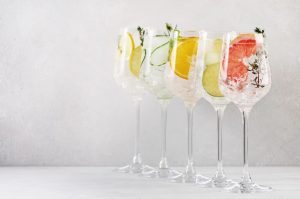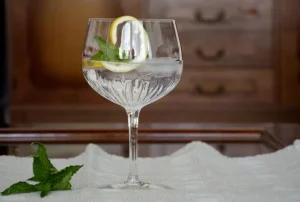Gin and vodka are two of the most popular alcoholic beverages in the world. Although both are distilled, there are significant differences in their origin, ingredients, flavor and use in cocktails.
In this post we will explore the differences between gin and vodka, as well as some of their most common uses.
History and origin
History and origin of Geneva
Gin originated in the Netherlands in the 17th century. At that time, it was mainly used for medicinal purposes and was made from distilled grains and juniper.
During the 18th century, gin became a popular drink in Britain, where many of the gin recipes we know today were developed.
History and origin of vodka
Vodka, on the other hand, has its roots in Eastern Europe, where it was made from potatoes or grains and used for medical and ceremonial purposes.
Over the centuries, vodka has become a popular drink around the world and has been associated with countries such as Russia and Poland.
Ingredients
One of the main differences between gin and vodka is its processing process and the ingredients used.
Gin is made from distilled grains, such as barley or rye, which are then infused with botanists such as juniper, coriander and angelica root to give it its characteristic flavor.
Vodka, on the other hand, is made from grains or potatoes and is distilled several times. Its production process is more complex, as the goal is to create a drink without a distinctive flavor or aroma.
Taste and aroma
Another important difference between gin and vodka is its flavor and aroma.
The gin has a distinctive juniper flavor and a wide variety of botanists that give it a unique and complex flavor. The combination of botanists used in the production can vary, meaning that there is a wide variety of gin flavors and aromas available on the market.
Vodka has a clean and neutral taste, without a distinctive flavor or aroma. The goal of making vodka is to create a drink that has no flavor or aroma, which makes it a perfect base for cocktails and mixed drinks.
Alcoholic strength of gin and vodka
The alcoholic strength of gin can vary, but it is usually in the range of 35-50%. The higher the degree of gin tends to have a stronger flavor and a more intense heat sensation in the throat.
The alcoholic strength of the gin can vary according to the region of origin and the specific recipe used in the elaboration.
While vodka usually has a degree around 40%. It is a drink with high alcohol content, but its neutral flavor makes it easy to mix in cocktails and mixed drinks.
Popular cocktails
Gin is a key ingredient in classic cocktails such as Gin and Tonic, Martini and Negroni. The most popular is Gin and Tonic which combines gin, tonic and limon.
Gin and Tonic recipe
Ingredients:
- 50 ml of gin
- 150 ml of tonic water
- 1 slice of lemon
- Ice
Elaboration:
- Fill a tall glass with ice.
- Add the gin to the glass.
- Add the tonic water to the glass.
- Add the lemon slice to the glass.
- Stir gently with a teaspoon.
- Enjoy your gin and tonic.
Vodka, on the other hand, is used in cocktails such as Bloody Mary, Cosmopolitan and Vodka Martini. Bloody Mary is a popular brunch drink that combines vodka, tomato juice and spices.
Bloody Mary’s recipe
Ingredients:
- 50 ml of vodka
- 150 of tomato juice
- 1/2 teaspoon of Worcestershire sauce
- 1/4 teaspoon of tabasco sauce
- 1/2 teaspoon of lemon juice
- 1 stalk of celery
- Ice
Elaboration:
- Fill a tall glass with ice.
- Add the vodka to the glass.
- Add the tomato juice to the glass.
- Add Worcestershire sauce, Tabasco sauce, lemon juice, salt and black pepper to the glass.
- Stir gently with a teaspoon.
- Add the celery stalk to the glass.
- Enjoy your Bloody Mary.
Popularity
In recent years, both drinks have experienced a resurgence of popularity, especially among lovers of classic cocktails. Consumers are interested in trying different types of these drinks to find their favorite flavor.
If you found it an interesting post, we recommend reading “Gin etymology“






